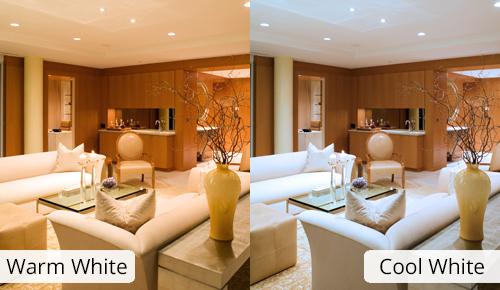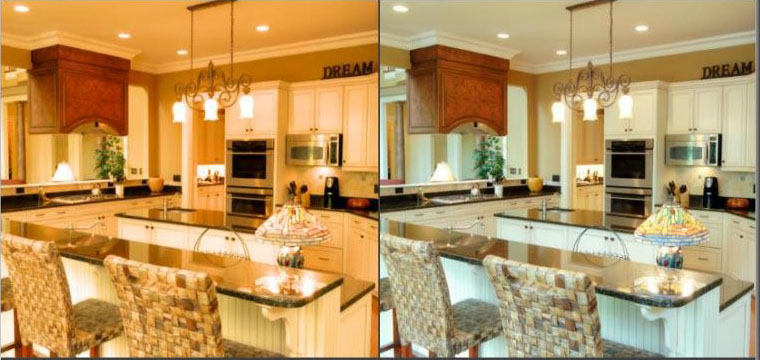Tagged: choosing
Tip: Choosing Color Temperature
Choosing a color temperature for your home is important. It can, however, be a confusing task. We’re here today to give you a few pointers and information that will make the decision an easy one!
As you can see from the photo, the color temperature you choose can have a tremendous effect on your space! We rate the color temperature with the term “Kelvins”. Kelvins refers to how warm (yellow/ orangish) or cool (blue/ greenish) a light is. The higher the kelvins, the cooler the light.

For a long time, people pretty much always used a warm color temperature for their homes. Everyone liked how warm and cozy it made their spaces feel. This is perfectly fine for living spaces such as dens, dinning rooms, and living rooms, but for spaces you work and preform tasks in, a cooler temperature is more ideal. Let’s go through ideal temperatures for typical rooms in a home.

2700K– At 2700K, we get a “soft white”, which is slightly yellow. This makes a space feel warm and cozy, making it ideal for living rooms, bedrooms, and dinning rooms.
4001K– At 4001K, we get a “cool white”, which is a pretty true white. This makes it do well for spaces like kitchens, baths, and offices.
5000-6500K– Any color temperature between 5000K and 6500K is considered equivalent to daylight, spefically around noon on a cloudless day. It has a slightly blueish hue. Since this is the “truest” light, it is ideal for any space in which reading or complex activities (cooking, applying makeup, ect.) are preformed. This is because it offers the greatest color contrast.
We hope that this post was helpful to everyone, and that it will now be a simple task to choose a color temperature!

